40 Must-Know New Zealand Travel Tips for a Smooth Trip
If you're planning a solo trip to New Zealand and feeling a little nervous—you're not alone. I remember staring at my itinerary, wondering if I was making the right choices.
How would I get around? Was it safe? Would I miss anything important?
I spent a month exploring New Zealand in early 2025, much of it solo, and let me tell you—there were quite a few things I wish I had known before I arrived. Some were small but helpful (like bringing my passport when ordering a drink), while others were big (like unexpected cultural differences).
That’s why I created this essential guide—to help you avoid the mistakes I made and travel New Zealand with confidence.
Whether you're mapping out your itinerary, looking for key safety information, or wanting to understand local customs, these 40 must-know New Zealand travel tips will make your trip smoother, stress-free, and way more fun.

Itinerary Planning Tips for New Zealand
Mapping out your New Zealand itinerary will likely be the most challenging part of your trip. With SO much to do in this beautiful country that makes it worth a visit, it can be hard to choose where to visit in New Zealand and what to include in your plans.
Here are my key New Zealand travel tips to help you figure out your itinerary and make the most of your time in New Zealand.
1. Accept That You Won't Be Able to See Everything
You're going to have to be realistic with the number of places you visit during your trip based on the amount of time you have for a few reasons:
- New Zealand is absolutely PACKED with things to see and do. You could probably spend months there and still not hit everything.
- While the total land area of New Zealand is similar in size to Colorado and the United Kingdom, it can take quite a long time to get from place to place.
In planning my trip to New Zealand, I often found that places looked close together but were actually quite far apart (I'm looking at you, Fox Glacier and Mount Cook).
Roads, especially on the South Island, often pass through mountainous areas that require slower driving. Plus, it's not uncommon to run into construction that requires stopping for a little while.
Even if you're just looking to hike in one area, there are so many wonderful hikes that could quickly fill up your itinerary.
I loved my month in New Zealand, but in some ways I feel like I only scratched the surface on all the country has to offer. I already know I'm going to have to go back to see some things I missed!
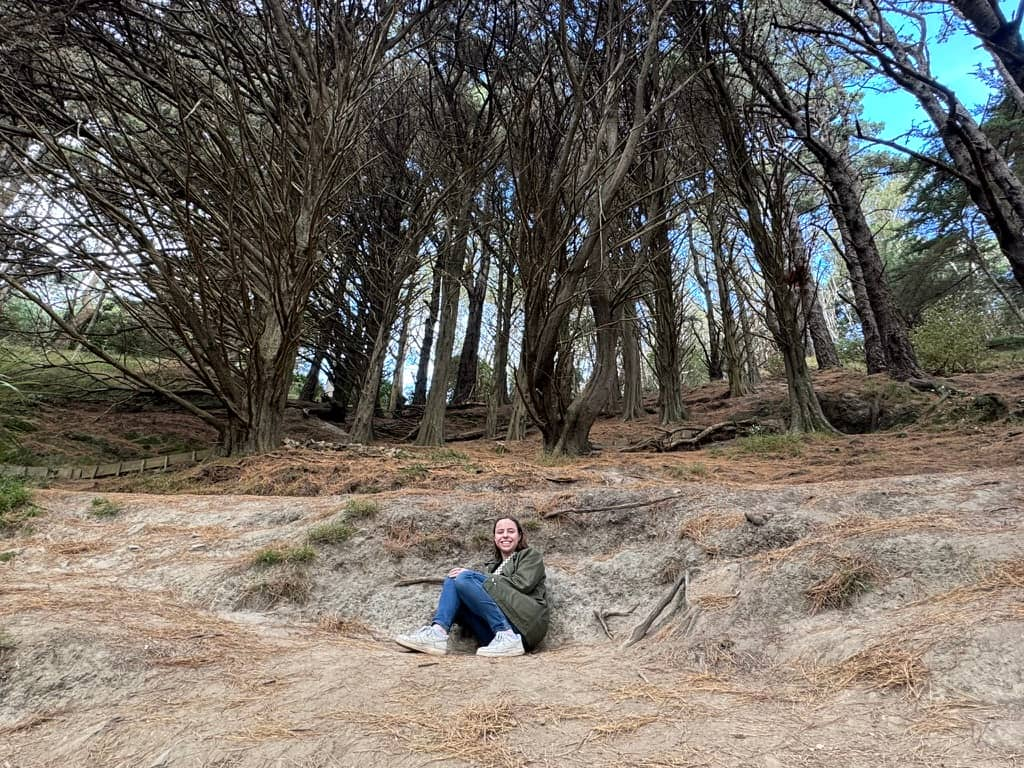
2. Know That New Zealand is Great for Solo Travelers
As you prepare your itinerary, know that the country is a great place for solo travelers. It's safe, and you can often find many other women traveling solo.
The global peace index rates New Zealand as the fourth most peaceful country in the world. To put this in perspective, the U.S. ranks at 132.
Since it's so safe, you don't really have to worry much about any areas to avoid or be super careful in the way you plan out your itinerary.
And if you're looking for friends along the way, you should be able to find plenty. In my experience traveling around New Zealand solo, I met many other solo women during my tours and hostel stays.
Solo travelers are everywhere in New Zealand and they're traveling in all kinds of ways–renting cars or vans, taking trains or buses, going on group tours, etc.

3. Understand That Weather Can be Unpredictable
New Zealand's location in the South Pacific and its small mountainous land area cause the climate to be “predictably unpredictable” according to the New Zealand government. Conditions can change quickly without much warning, even in the summer.
I also found the country has many different micro-climates. You can drive a short distance and encounter very different weather.
All this to say it can be really difficult to predict the weather.
When I wanted to do the Tongariro Alpine Crossing, the shuttle companies cancelled services because the winds on the mountain were reaching 80 km per hour. However, in the town below, it was a lovely sunny day with just a light breeze.
When I visited Fox Glacier, it was terribly cloudy all morning. I worried my helicopter hike for the glacier would get cancelled, but thankfully the clouds cleared just in time.
Not only will weather potentially affect any activities you have planned, but it can affect transportation too. I've heard stories of the ferry between the islands shutting down if the weather gets bad enough. Sometimes roads close, and there aren't always quick detours.
Because of this unpredictable climate, you'll need to pack appropriately with lots of layers, including some waterproof clothing, especially if you plan to hike. You'll also need to stay somewhat flexible with your plans.

4. Build Buffer Time Into Your Itinerary for Your Top Activities if Possible
When planning any kind of nature activity that depends on weather or wildlife, the unpredictability of both means your plans may get cancelled.
For this reason, I recommend thinking about what things are highest on your list for your trip to New Zealand. If you can, book an extra night or two in the destinations for your top activities to give you the best chance of having those experiences.
This is one of those New Zealand travel tips that I really wish I had thought of before planning my trip. I left New Zealand feeling slightly disappointed after several of my hikes and a stargazing tour got cancelled due to weather.
Thankfully when it came to wildlife, I got lucky. I went on a whale watching tour in Kaikoura and saw two sperm whales! However, I ran into others whose tours were cancelled because the whales weren't around.
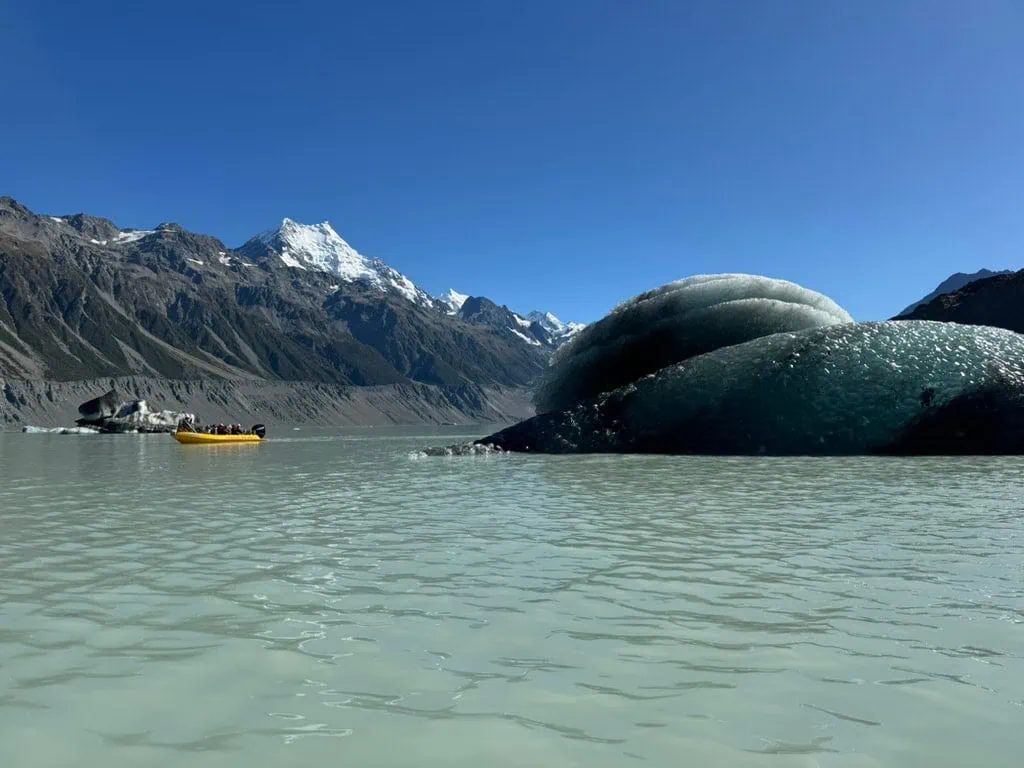
5. Plan Your Trip Well in Advance
With so much to see, you might find planning your New Zealand itinerary feels a bit like putting a puzzle together. It can take some time to research what you want to do and then try to fit it all together in a way that won't leave you completely exhausted during your travels.
In addition, some destinations throughout the country have limited places to stay. Hotels and hostels can sometimes fill up quickly. So can tours and any public transportation tickets like New Zealand's long-distance trains–especially the one connecting Wellington and Auckland.
That's why I recommend giving yourself plenty of time to plan out your trip well in advance.
Personally, it took me about a month to plan my trip. And then since my dad traveled with me for part of it, I was waiting for him to confirm when he could get the time off. I didn't start booking anything until about two months before the trip, which was less than ideal.
Don't be like me! By the time I started booking, one of the trains I was looking into was sold out, and one town I stayed in only had one accommodation left with availability. I visited in March, during shoulder season, so that probably helped me a little.
If you plan to visit during peak season more in mid-summer, then I recommend making your bookings at least 3-6 months in advance.
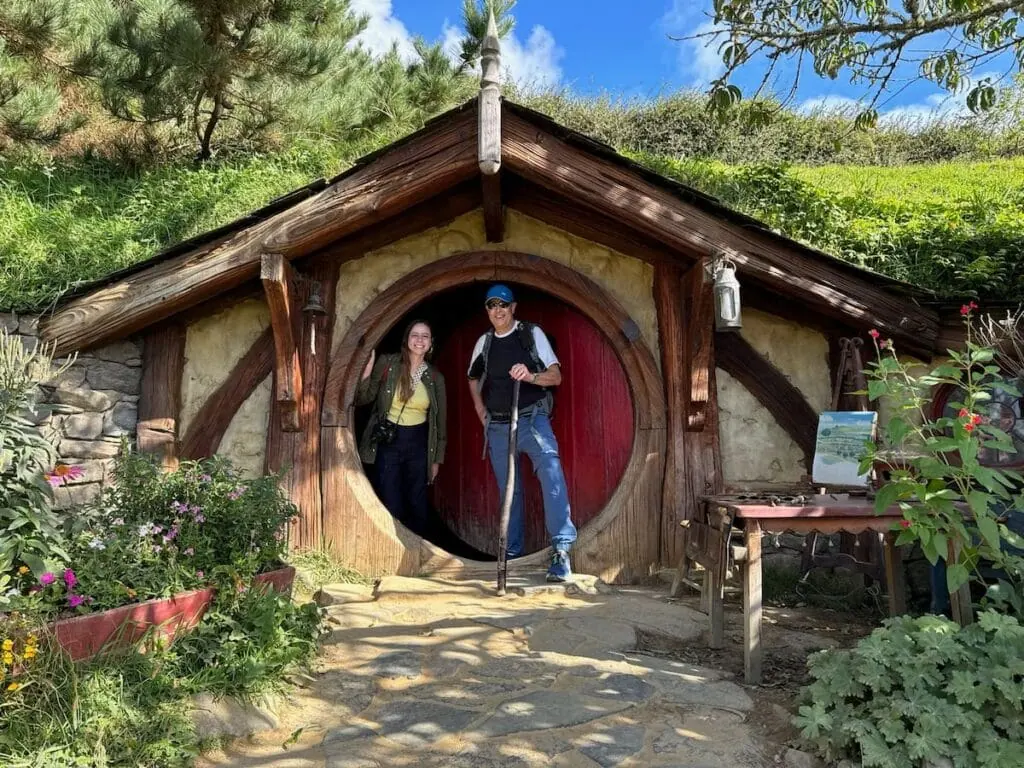
6. Don't Totally Write Off the North Island
When planning a trip to New Zealand, people will often tell you to skip the North Island entirely and head down to the South Island. While it's true that the South Island has better mountains and more dramatic landscapes compared to the North Island, there's much to see on the North Island as well.
Here's a sample of things you can do in the North Island:
- Learn more about Māori culture, including seeing performances and taking part in a traditional meal
- Hike the Tongariro Alpine Crossing, considered one of the world's best day hikes
- See geothermal activity, including hot pools and glaciers
- Enjoy some of New Zealand's best beaches
- Visit New Zealand's largest lake, Lake Taupō
- See the filming location for the Shire in The Lord of the Rings and Hobbit movies
- Experience two iconic New Zealand cities: its largest city Auckland (it's totally worth a visit!) and the capital Wellington (also home to the LOTR film creators)
I focused most of my New Zealand trip on the South Island but was still able to see much of the North Island by flying in and out of Auckland and taking the ferry between islands. Some of the things I did on the North Island were my favorite parts of my trip!

7. Be Realistic with the Amount of Driving You Do in One Day
Driving in New Zealand is different than driving in the U.S. With winding narrow two-lane roads, stops for road work, as well as countless stunning viewpoints along the way, driving often takes longer than you'd expect in the country.
Driving in New Zealand can be quite stressful and fatiguing.
I can knock out a six-hour drive in the U.S. fairly easily. While I don't love it, it's not bad with our big interstate highways.
Whereas in New Zealand, I found that even driving for three or four hours really took a toll on my energy since it's much more mentally taxing to drive there.
When I was leaving Mount Cook, a car heading towards me made such an aggressive pass that I had to slam on the brakes and swerve slightly towards the side of the road to avoid a head-on collision. I was so on edge for the rest of that four hour drive…
So all this to say I recommend keeping your driving distances capped at around four hours max in one day if possible. Otherwise you're going to be too tired to really enjoy your trip.

8. Know That You Don't Have to Drive if You Don't Want to
Many people will tell you that you HAVE to rent a car to visit New Zealand, but I disagree. I do think it's the best mode of transport, but it's not your only option.
New Zealand has various train and bus options running all over the country if you'd prefer to travel via public transport.
Know that public transportation options can be limited, often running certain routes only a few days per week. But if you have some time in your itinerary, these could be a good option for you.
I personally traveled on two of New Zealand's trains–one on the South Island and one on the North Island. I found them really comfortable, easy, and fairly affordable.
The only issue I had with the trains was when I was considering staying longer in National Park to try to do the Tongariro Alpine Crossing since my original date for the hike turned out to have too poor of weather conditions.
I had a ticket on the train for Friday, but the next train wasn't until Sunday and at that point it was sold out already. Bus tickets were available for Sunday, but I didn't feel like sitting on a bus for six hours and spending additional money so decided to keep my original train ticket.

9. Consider Staying in Hostels to Save Money and Meet Others
I know. I know. You might be thinking 1) duh and 2) I'm too old for this.
But the thing is, I found New Zealand's hostels to be quite nice. Many offer private rooms, so you just have a shared bathroom. Plus, I noticed people of all ages staying in hostels.
Sometimes I worry I'll feel too old to be staying in hostels since I'm almost 30, but I didn't feel that way in New Zealand.
Heck, I even made my dad stay in a few where we had our own private room. He wasn't the only one there who was 60+.
And then when I traveled solo around New Zealand, I found the hostels there seemed to generally have a pretty good culture with lots of activities and people of all ages open to meeting others.
I had always thought New Zealand would be quite expensive. The food was expensive, but staying in hostels like this, even with private rooms, made it incredibly affordable without sacrificing much on comfort.
Trip Preparation Tips for New Zealand
After you map out your itinerary, it's important to make sure you're well prepared for your trip. Here's my travel advice for New Zealand to help you finish prepping.
10. Don't Forget to Apply for a Travel Authorization (or Visa)
Americans visiting New Zealand do not need a tourist visa, but they do need to apply for the New Zealand Electronic Travel Authority (NZeTA) in advance.
You can apply for NZeTA here. They say NZeTA can take up to 72 hours to process, but I'd give yourself more time to be safe. This travel authorization is good for two years.
While the website says the cost for this starts at $17 NZD ($9.75 USD), I paid $68.94 USD for mine.
If you're not from the U.S. and aren't sure if you need to apply for a visa or NZeTA, you can check here by entering your country details.
If you need to apply for a visa, know that 80% of visas are processed within 2.5 weeks. It's a good idea to apply sooner than that to ensure your visa has plenty of time to get processed.

11. Make Sure You Have Your Flight Out of New Zealand Booked
If you're just entering as a tourist, you must have a flight out of New Zealand booked or you may be denied entry into the country.
Make sure to have your flight itinerary information handy in case you need to show it to anyone. I recommend downloading your flight itinerary confirmation email to Google Drive and having that on your phone available for offline use whenever you need it.

12. Get an eSim and Ensure You Can Make Calls in New Zealand if Needed
You'll want to have access to reliable cell service specially if you plan to drive around New Zealand. I recommend you do the following two things to ensure you get service and can make calls.
First, purchase and download an eSim for New Zealand from Airalo. The eSim will allow you to get cellular data on your phone while visiting the country.
Airalo eSims can be set up directly on your phone. Setup can be a little confusing sometimes, but I've found that Airalo provides helpful instructions and responsive customer service if you need to support.
I use Airalo eSims on all my travels and have really appreciated their support and the variety of plans they offer.
For instance, here are some of the plans they provide for New Zealand:
- 3 GB for 30 days – $11
- 5 GB for 30 days – $16
- 10 GB for 30 days – $27
If you need more data at any point, it's easy to top up too. I ended up having to top up twice when I was in New Zealand because I was using my phone for a lot of navigating and planning.
Get Low-Cost Cellular Data Abroad
Gone are the days of paying exorbitant fees to your phone provider at home. You can now easily get cellular data with an eSim for as low as $4.50 in New Zealand with Airalo.
➡️ Purchase an Airalo eSim for New Zealand Here
Since eSims typically only include cellular data and not calls and texts, I recommend downloading Google Voice as well. With Google Voice, you can create a virtual phone number that you can use to make calls and send messages over wifi or data.
Calls to the U.S. and Canada are free. To make calls in New Zealand, you just need to add a small amount of money to your account. Whenever I made calls, they were usually around 3 cents per minute.
I don't often have to make calls while traveling but found I did in New Zealand several times, especially when some of my tours were cancelled due to weather.
Even if you don't think you'll need to make calls, I recommend setting up Google Voice with any of your accounts that have two-factor authentication like your bank. That way you can receive any authentication codes while abroad and still access your accounts.
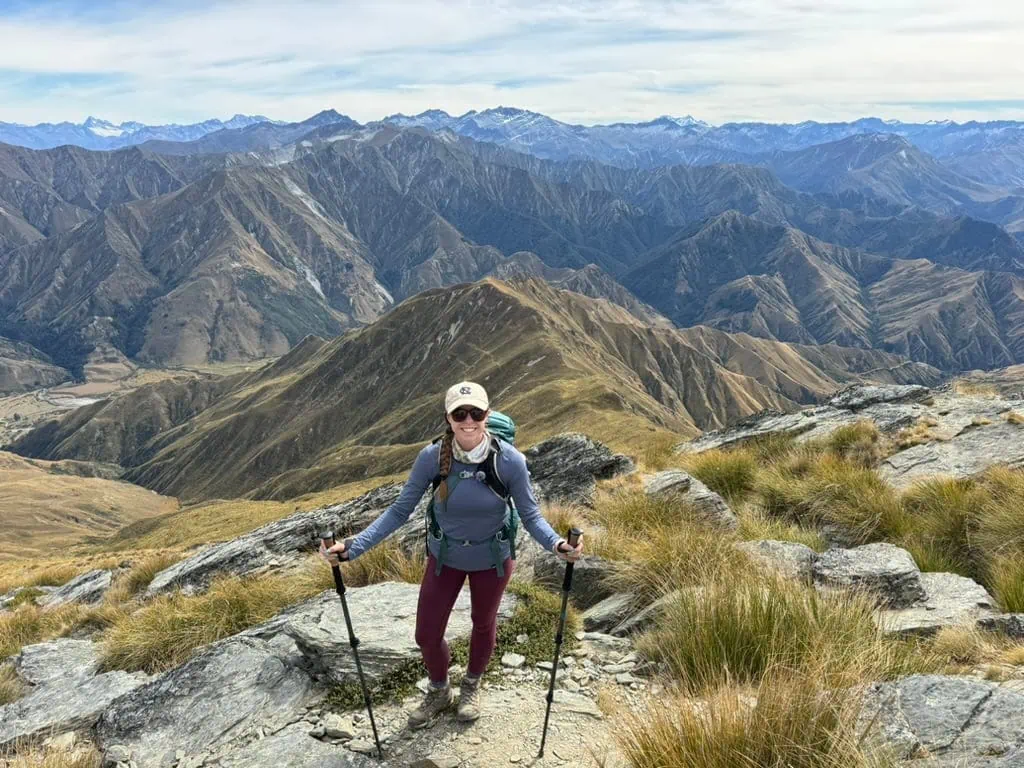
13. Clean Any Hiking Gear in Advance and Declare it at Customs
New Zealand is one of the strictest countries in the world when it comes to biosecurity. They have a fragile ecosystem that has already seen devastation from invasive species, and they're committed to doing what they can to protect their land moving forward.
One of the main things they check when you enter is your hiking gear. It's important that you clean any hiking boots, trekking poles, backpacks, tents, etc. before entering New Zealand. I'd also make sure any of your regular shoes are clean and don't have any soil on them.
When you arrive, declare your hiking gear, and know that customs officers may potentially inspect it and clean it.
For me, I just had to talk to a customs agent who asked me what I was declaring, how I cleaned it, and if any soil was on it. She then had me walk next to a dog that was sniffing everyone's bags. They didn't end up inspecting any of my items.
In the end, it was a pretty fast process and actually faster than the nothing to declare line from what I could see.
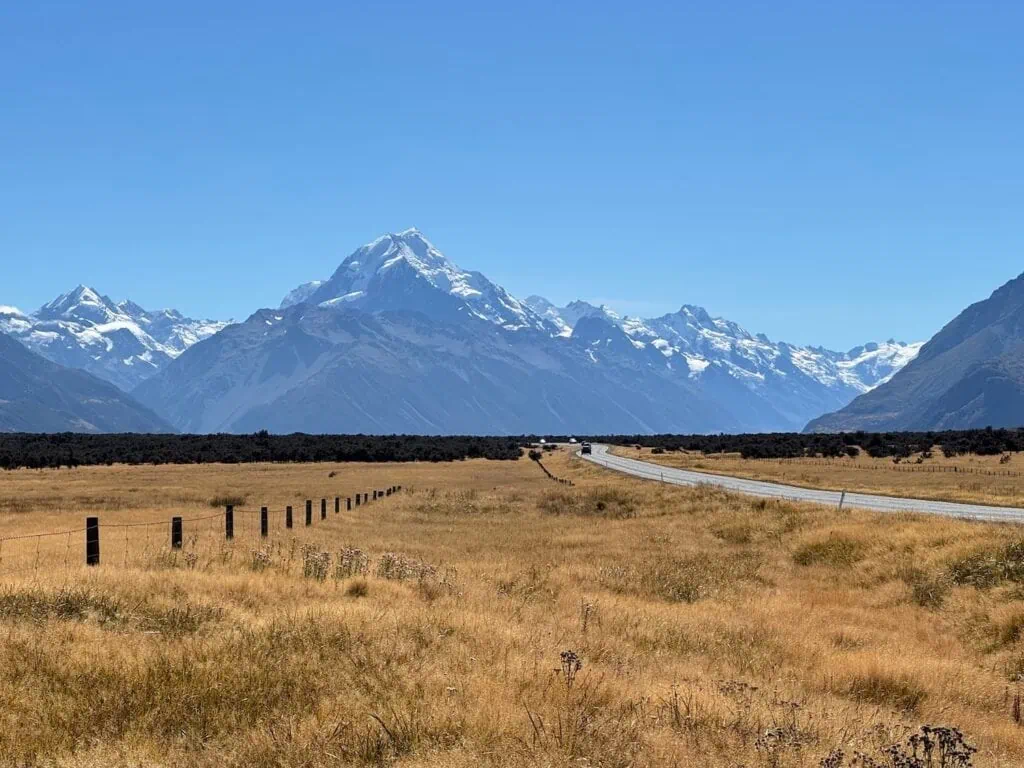
14. Look Into the Working Holiday Visa
If you're in your 20s or early 30s and would like to visit New Zealand for a longer period of time, look into the Working Holiday Visa. This visa allows you to work and stay in the country for up to a year.
Requirements vary pending the country you're from, but for U.S. citizens to get the visa you have to:
- Be age 18 to 30
- Pay $670 NZD ($383 USD at the time of writing this)
- Have a ticket to leave New Zealand after or proof of funds to buy one
- Show proof of at least $4,200 NZD ($2,403 USD at the time of writing this)
- Live in the country that you're a citizen of
- Obtain full medical insurance
- Have a passport valid for up to 15 months after entering New Zealand
- Be in good health
- Be of good character
The visa is a great way to enjoy all that New Zealand has to offer without completely burning through your savings.
I met folks all over New Zealand who were on this visa. Some were working in hostels, running guided tours, or working in cafes. Others weren't working at all but were just using the visa as a way to get more time in the country.

Health and Safety Tips for New Zealand
When visiting a country with so much natural rugged beauty like New Zealand, it's particularly important to keep health and safety tips in mind. While Aotearoa is full of spectacular scenery, it can quickly turn dangerous if you're not prepared.
15. Purchase Travel Health Insurance
Any time you leave your home country, you'll want to make sure you have health insurance coverage abroad in case something happens and you need to seek medical attention. This is even more critical in a country like New Zealand where you may be doing adventurous activities and driving on challenging roads.
I personally use SafetyWing whenever I travel. It's easy to sign up for a plan for as long as you need, and pricing is the same no matter if you travel to just one country or multiple.
Get Travel Health Insurance
You don't want to find yourself in a situation where you get hurt abroad and need to pay astronomical amounts of money to get the care that you need. Get yourself covered at a reasonable price with SafetyWing travel health insurance.
➡️ Purchase SafetyWing Travel Health Insurance Here
16. Apply Sunscreen Thoroughly and Often
New Zealand has a thin ozone layer and often has higher levels of UV rays compared to many other places in the world. This means it's critical to apply a high SPF sunscreen and avoid the sun when you can.
In fact, at its peak in the summer, New Zealand's UV levels are around 40 percent higher than those at similar latitudes in the Northern Hemisphere.
The first thing I did when I arrived in New Zealand was visit a grocery store to buy more sunscreen. In that span of time between landing at the airport and buying sunscreen, I got sunburned…
When UV levels are so high, you can get sunburned in minutes.
Even after I got the sunscreen, I started applying and reapplying it every day in intervals that I thought were often enough, but I still got burned a few more times.
The sun in New Zealand is no joke, so definitely be diligent with sun safety during your visit!

17. Bring Medicine for Motion Sickness
If you're planning to get on a boat at any point–whether it's the ferry between the two main islands, a whale watching tour, or something else, you'll want to bring motion sickness medicine with you.
With New Zealand's chaotic weather can come heavy seas. The last thing you want on your holiday is to be feeling sick instead of enjoying the experience.
When I went on my whale watching tour, the tour company told us the chances of getting sea sick were really high that day due to rough waters. I took motion sickness medication and felt fine, but I could tell some other folks on the boat were struggling.
You may not have any issues at all on your trip, but it's best to be prepared with medication to be safe.
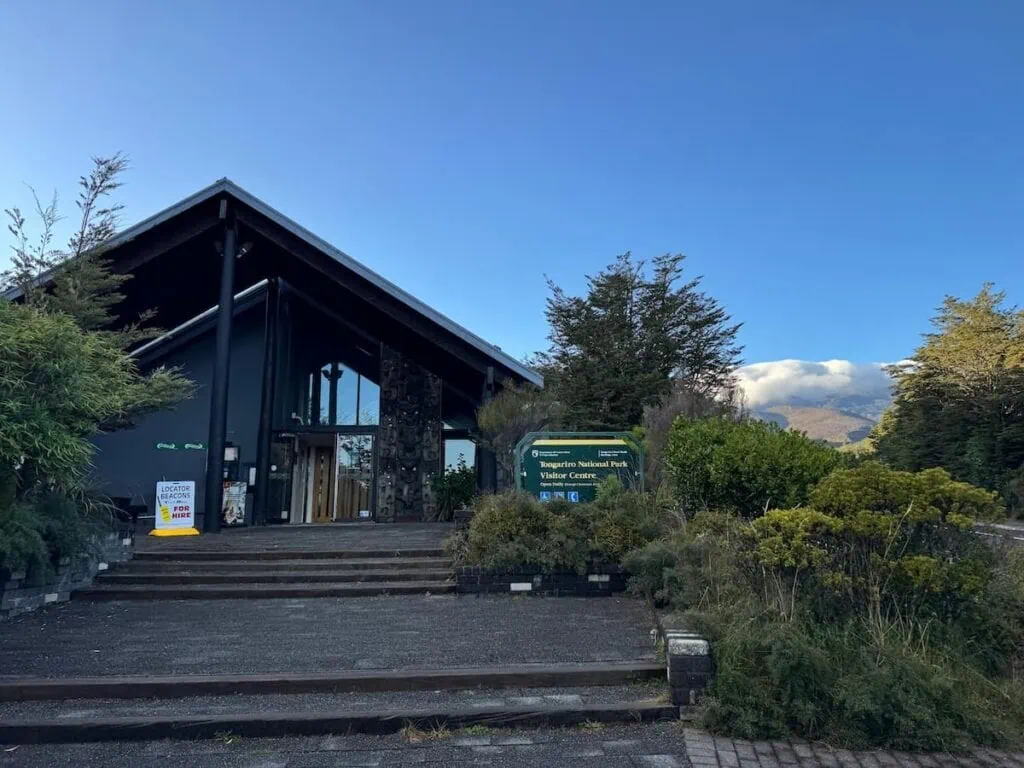
18. Check in with the DOC Ahead of Any Major Hikes
New Zealand's Department of Conservation (DOC) oversees all national parks throughout the country. If you can, it's best to check in with them on weather before any major hikes as they will have the best information on weather forecasts in the mountains.
They know the routes well and can advise on whether it's safe to proceed with the hike and any potential risks you may encounter. If it's not safe to do the hike, they should be able to tell you about other options nearby that you could do safely instead.
When I wanted to do the Tongariro Alpine Crossing, it was helpful to visit the DOC to get the best weather forecasts. When my hike was cancelled, the staff gave me recommendations on where I could still safely hike and which areas I should avoid.
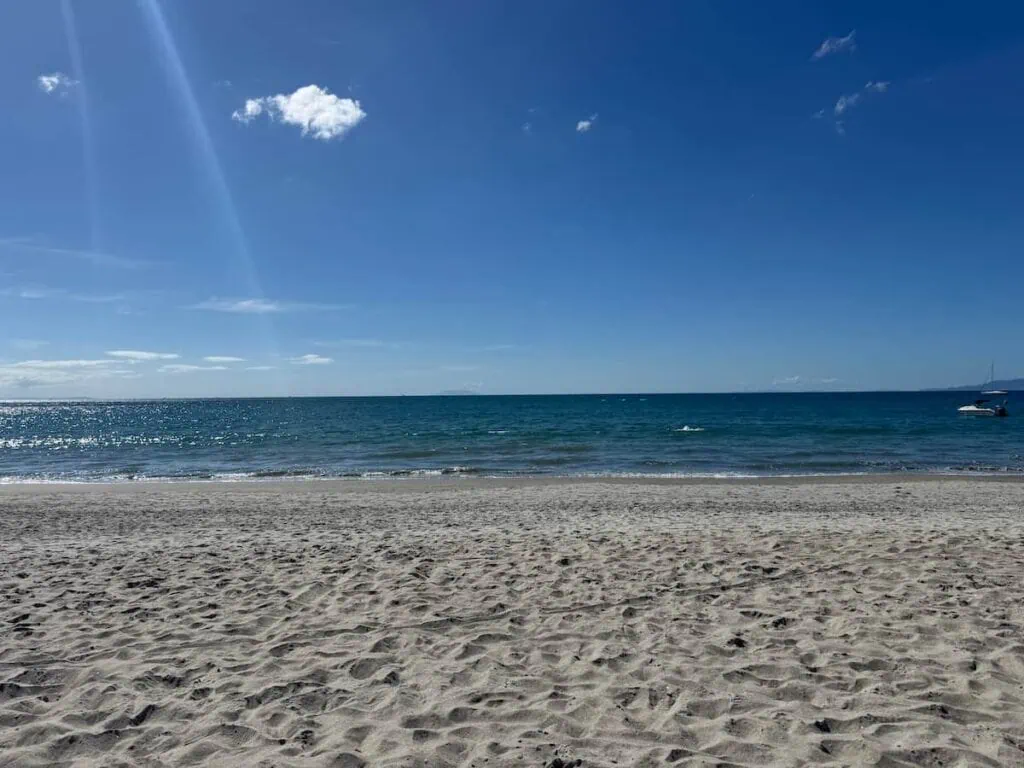
19. Don't Assume You Can Safely Swim at Any New Zealand Beach
It's not uncommon to find strong rip currents around the beaches in New Zealand. Many beaches don't have lifeguards on staff watching over them either.
Before you decide to go swimming at the beach, do some research and consider talking to a local to see where they recommend going for a safe swim.
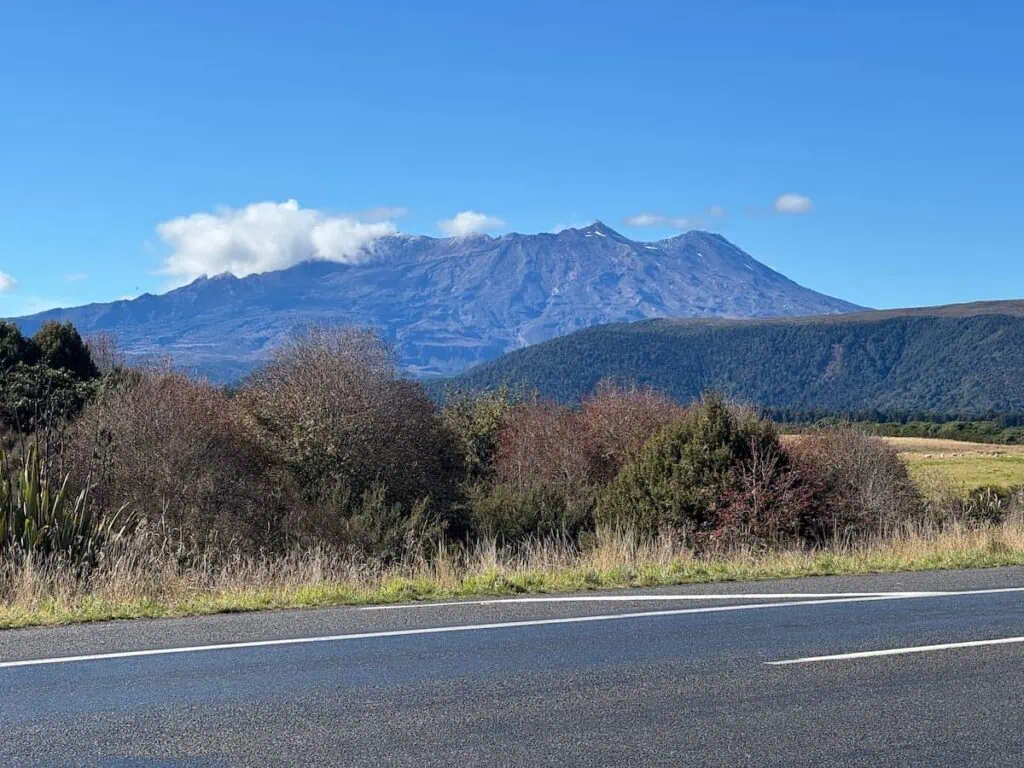
20. Keep an Eye on Any Volcanic Risks
New Zealand has 24 volcanoes that have erupted or could potentially erupt according to the Smithsonian Institution. Because of this, you'll want to monitor for any volcanic risks while traveling around.
The risk of a volcanic event is typically pretty low, but you never know what might happen.
I'll never forget watching a documentary on the horrible Whakaari/White Island disaster where many tourists were killed or injured while on a tour to visit the volcano when it erupted.
While most tour operators in the country take safety very seriously, you never know. Even if you're not taking a tour or planning any activities near a volcano, there's a chance you could be driving by one.
While it's impossible to fully predict volcanic eruptions, scientists keep a close eye on New Zealand's volcanic activity and assign various ratings to indicate when volcanoes are becoming more active. You can check those ratings and learn more about volcanic risks here.
During my trip, I monitored that website before I was supposed to do the Tongariro Alpine Crossing since that hike crosses through a volcanic area.
Driving Tips for New Zealand
Driving in New Zealand may feel a little daunting, especially if you're from a country where you drive on the right side of the road. I've been there. I get it!
Thankfully, I found that driving on the left side of the road wasn't too bad. There were other factors to driving in New Zealand that I thought made it a little more challenging compared to driving in the U.S.
Here are my New Zealand travel tips related to driving so you can feel more confident and prepared going into your trip.

21. Be Careful Driving
I know this might sound obvious, but tourists have gotten in terrible accidents in New Zealand when they try to drive like they do at home.
For many, the most difficult part of driving in New Zealand is navigating the winding and narrow two lane highways. I don't love going 100 km/hr (about 62 mph) on a two lane road even when it's straight but definitely not when it's full of big curves!
With roads like this, you'll want to be extra cautious driving and be much more alert.
Keep a close eye on approaching traffic, curves in the road ahead, and any cars behind you. If you see a sign recommending a lower speed for a curve, follow that advice.
22. Let Other Cars Pass When Needed
While driving, you'll surely encounter cars wanting to go much faster that get stuck behind you. In these moments, keep an eye out for a place to pull over or a passing lane.
When navigating passing lanes, you'll want to stay in the left-hand lane to let the other car pass on the right. It's a good idea to slow down a little bit too so the other vehicle can more easily pass.
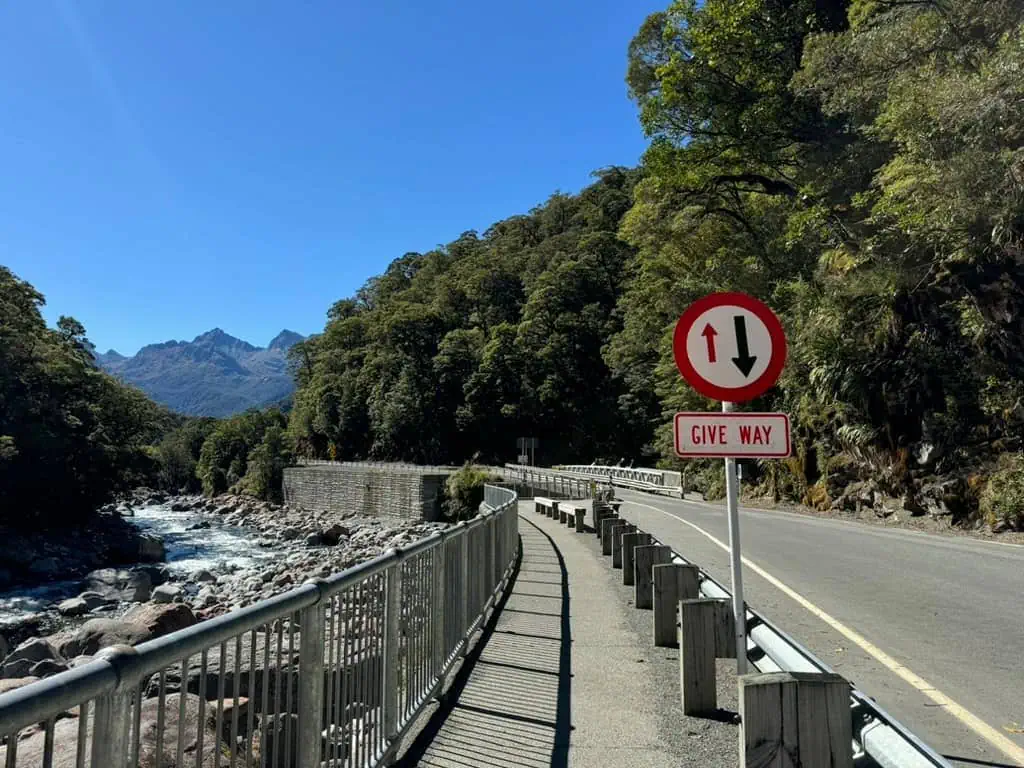
23. Learn How to Travel Over Their One-Lane Bridges
One of the most confusing parts of driving that I had to learn quickly was how to navigate their one-lane bridges. You'll find these all throughout the country, even on their main highways.
At each end of a bridge, there are signs to indicate which side has the right of way and which side needs to yield. The signs show two arrows:
- If your arrow is smaller and red, that means you must yield to any oncoming traffic and let them pass through before you can go over the bridge.
- If your arrow is bigger and white, that means you have the right of way, but of course you'll still want to drive through cautiously and make sure no one is already coming over the bridge.
24. Know that You Can't Turn at a Red Light
While it's legal to turn right at a red light in the U.S., you can't do the same in New Zealand with left turns. You must stop at the light and can only turn once the signal changes to green.

25. Understand How to Navigate a Roundabout
When navigating a roundabout, you need to yield to cars already in the roundabout. Once clear, you can enter, and then you have the right of way while driving through the roundabout.
If it's a multi-lane roundabout, you will want to make sure you get in the correct lane. Typically, if you are taking the first exit, you will take the left lane. If you are exiting after that, you will take the right lane.
I found the signs and road markings in New Zealand to be very clear and helpful in telling you which lane to be in for the roundabout.
Shortly before you exit the roundabout, put your left blinker on if you can do so safely.
26. Pay for Gas Inside the Gas Station After Filling Up
In New Zealand you typically pay for gas after you fill up your tank. There's not usually a payment system on the pump either, so you have to go inside to pay at the register, telling the attendant which pump you used.

Etiquette Tips for New Zealand
New Zealanders tend to be quite relaxed, but there are a few tips you'll want to keep in mind when it comes to etiquette.
27. Take Care of the Environment
Like anywhere else, it's important to pick up your trash and leave no trace. However, New Zealanders tend in particular to be very mindful of doing their part to care for the environment, more so than I've seen in most places I've traveled.
Do your part to respect this and protect New Zealand's beautiful environment. Aside from picking up your trash, be sure you stay on hiking trails, don't feed or touch wildlife, and be mindful of your use of resources like water and energy.
Some places may have compost bins in addition to regular trash and recycling. Make sure to throw things out in the proper container.
You may also be asked to clean off your shoes with one of those brush scrapers and spray them with a disinfectant spray if you're going somewhere with a fragile ecosystem. I had to do this when boarding a ferry to Waiheke Island.
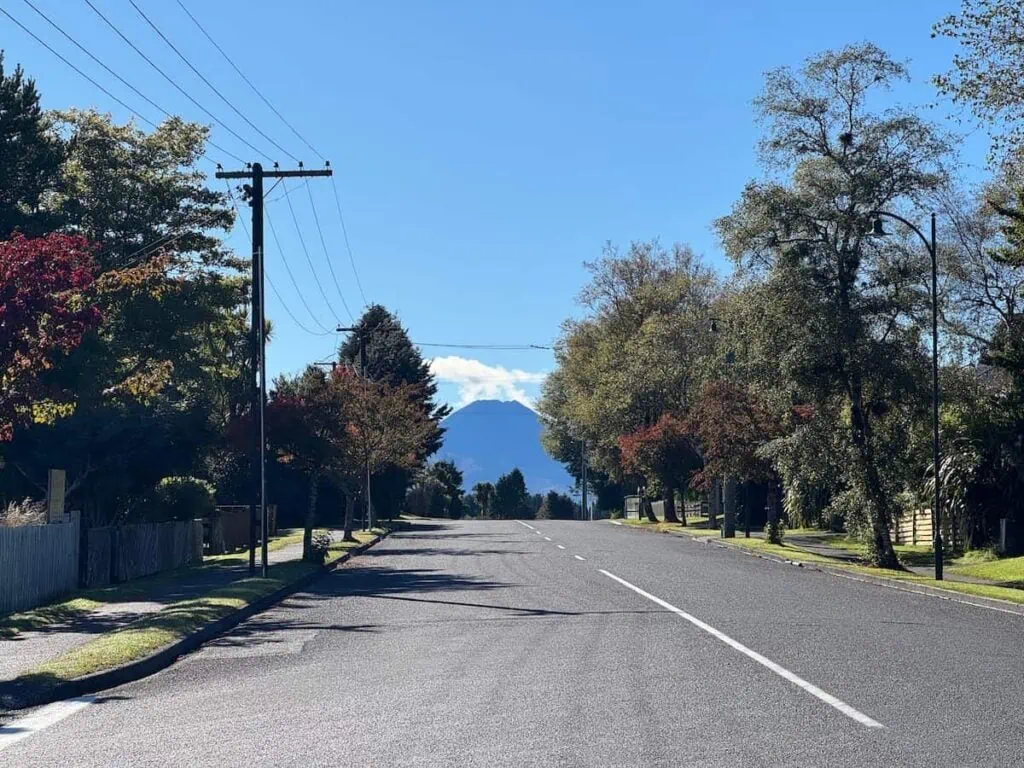
28. Respect Local Māori Customs
While you may be eager to go hike up that mountain or swim in a lake, be sure you check online first that you can do so. There are some spaces considered sacred by the Māori that you should respect and should not be touched.
For example, Mount Ngauruhoe, which was used as Mount Doom in The Lord of the Rings films, is considered sacred and the local Māori tribe asks that no one climb it.
You may encounter other sacred spaces where you're asked not to take photos, wear shoes, or eat food.
Another big tip to know when it comes to respecting Māori culture is not sitting or putting your bags on top of tables or food prep areas. This is something that many Kiwis, even those who aren't Māori, see as rude.

29. Try to Walk on the Left Side of the Sidewalk
Since you drive on the left side of the road in New Zealand, people tend to walk on the left side of the sidewalk too. Do your best to walk on the left, especially in bigger cities, and everyone around you will appreciate it.
30. Be Mindful of Your Noise Levels While Talking
I find that people from the U.S. are often criticized for being quite loud. This obviously isn't always true for every person, and plenty of other cultures can be loud as well.
Just be mindful to keep your speaking volume down when out in public. Listen to the volume of those around you and try to speak at a similar level.
31. Understand that New Zealanders Aren't Always Very Direct
Generally culture in New Zealand is less direct than in the U.S. and you need to try to read into what they're saying a bit more.
For example, if you're asking a local tour guide if they recommend you do a certain activity and they respond that it's “good” or “ok,” that may actually mean they don't necessarily recommend it.
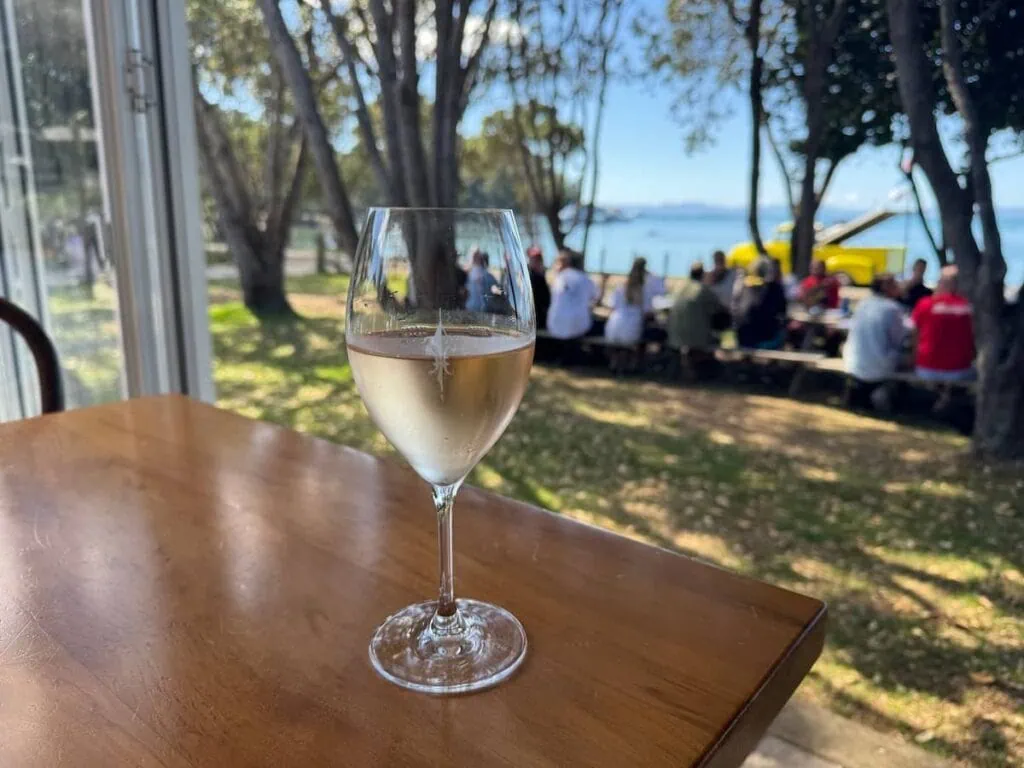
Dining and Drinking Tips for New Zealand
Wondering how to navigate restaurants in New Zealand? What about the best food and drinks to try? I've got you covered with these tips!
32. Don't Tip
Tipping in New Zealand is not part of the culture like it is in the U.S. Theoretically you can tip there, but Kiwis seem pretty adamant that you don't. They don't want the culture to change, and workers are paid a living wage there so don't need tips like they do in the U.S.
33. Know that You Typically Pay at the Front of the Restaurant
If you've finished your meal, don't wait around trying to flag your waitress or waiter for the check! In New Zealand, you typically pay at the front of the restaurant–either before or after you eat depending on the place.
In my experience, you can almost always pay with credit card. If you're dining with someone else, they can typically split the bill if you tell the staff who got what.

34. Avoid Asking to Customize Your Food Too Much
Food customization is not really much of a thing in New Zealand from what I've heard.
You could probably ask if it's possible to do something small like get a sandwich without the pickles. But otherwise, know that you can't really ask for much or it will be seen as rude, and it may not even be possible for the restaurant to make the modification.
If you have a food allergy, definitely flag that, and the restaurant will let you know if they can accommodate.
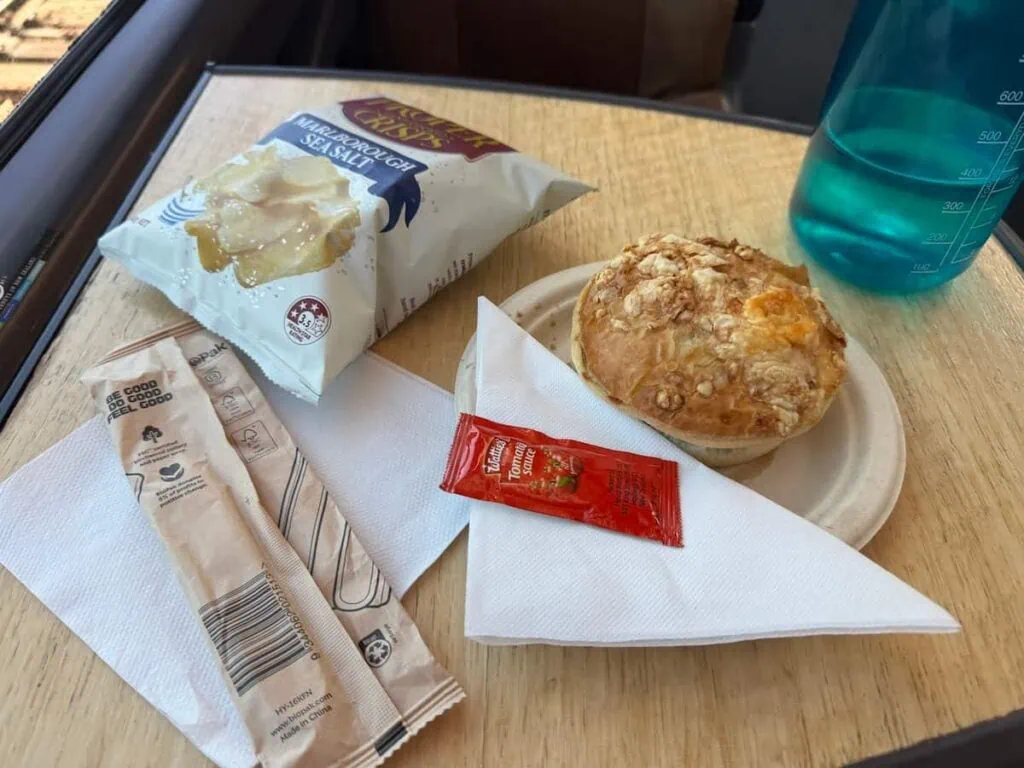
35. Eat All the Meat Pies
I've found that Kiwis are incredibly passionate about their meat pies. You can find them all over the country, and they're perfect when you want something quick that's warm and hearty.
You can find all sorts of flavors of meat pies. The most common flavors I saw were beef oriented (either “mince” (like ground beef) or steak).
Some shops will put out unique flavors. I had an incredible butter chicken meat pie at Roti Bros in Auckland.
Note that many of the most popular meat pie shops will often sell out of their pies by early afternoon, so you can't always find them for dinner.
For instance, I heard Vultures' Lane in Auckland is a great place for a meat pie, but they told me they usually sell out by 2 p.m. However, Fergbaker in Queenstown is known as one of the best places for a meat pie, and I had no problem getting one for dinner around 6 or 7 p.m. one night.
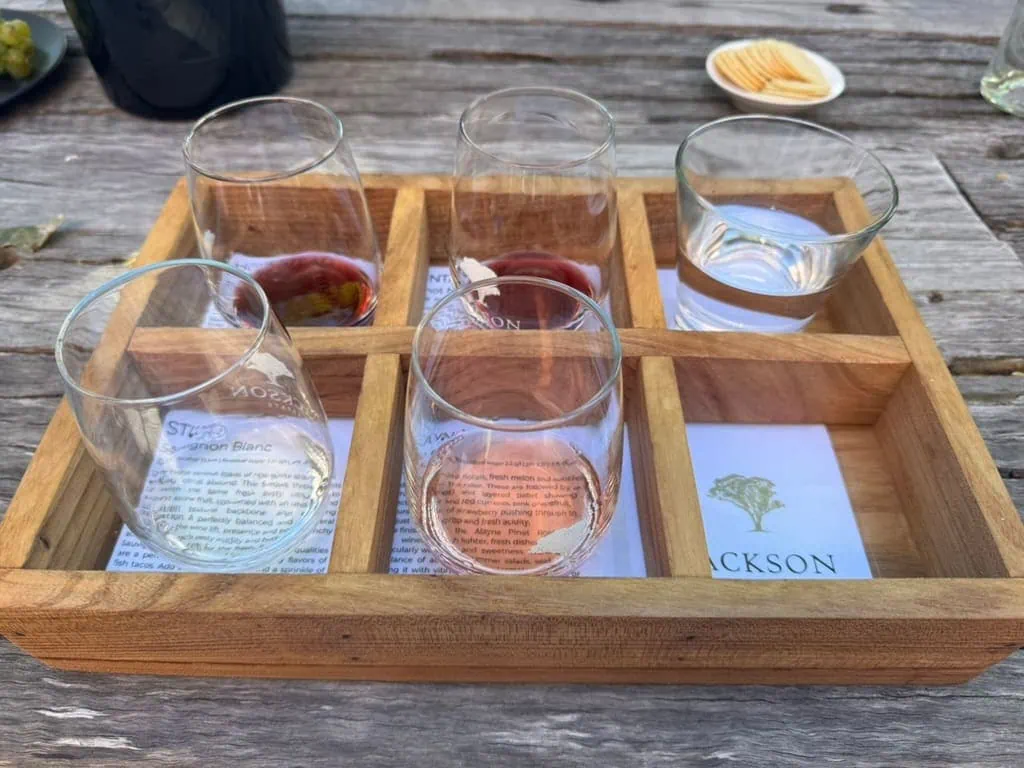
36. Try New Zealand's Incredible Wines
Remember when I said New Zealand has a lot of microclimates? This includes some areas of the country with great climates for winemaking!
They're particularly known for their sauvignon blancs and pinot noirs. If you have the time, I highly recommend going on a wine tour to visit a few wineries and learn more about winemaking in New Zealand.
Book a Wine Tour on New Zealand's South Island
Visit four award-winning wineries on this wine tour out of Blenheim on the South Island. I went myself and found it perfect for getting to learn more about New Zealand's wine.
➡️ Get Wine Tour Info + Book Here
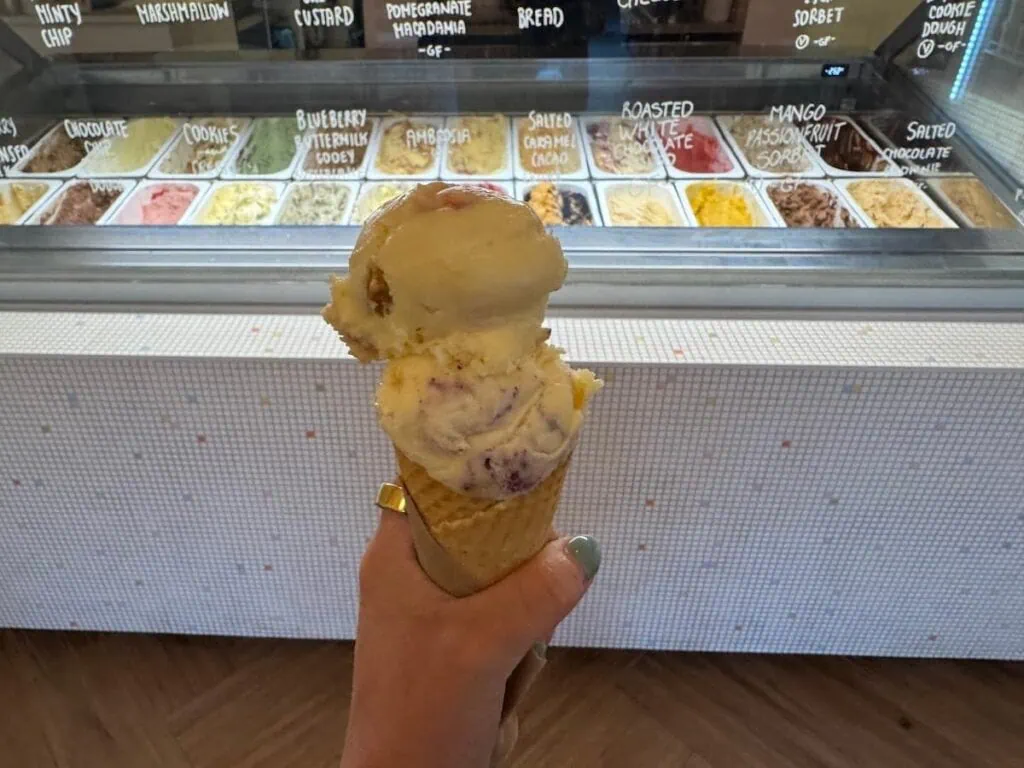
37. Enjoy Plenty of Ice Cream Throughout Your Trip
Throughout New Zealand, you can find numerous ice cream or gelato shops selling unique flavors to try. Here are some of my favorite shops I visited:
- Duck Island Ice Cream: This shop has locations all over New Zealand and cool flavors like white chocolate pomegranate macadamia, blueberry buttermilk gooey butter cake, and strawberry coconut lime leaf.
- Island Gelato: Originally from Waiheke Island, this shop now has locations all over the Auckland area.
- Giapo: This shop in Auckland serves incredibly unique flavors like jalapeño espresso and makes really creative cones, like one that looks like an octopus. I've never seen an ice cream shop like this before!
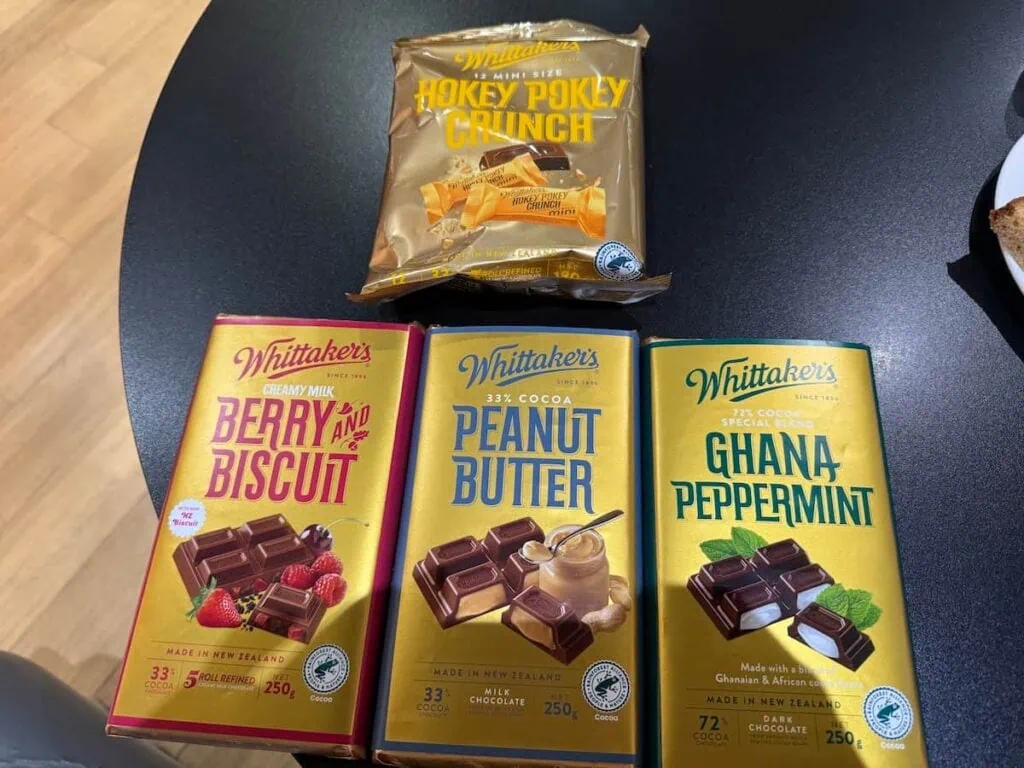
38. And Don't Miss Whittaker's Chocolate
When I was flying out of New Zealand, it seemed like everyone in the duty free store was loading up on this chocolate. It's THAT good. The woman behind me said it's the “best chocolate in the world.”
Honestly, I don't disagree! Although, I'm sure some artisanal chocolate in Switzerland would be better. But for a mainstream chocolate, Whittaker's is really incredible.
The quality and taste seems much better than typical grocery store chocolate to me. And they have SO many flavors like:
- Berry and a Biscuit
- Coconut Block
- Peanut Butter
- Dark Salted Caramel
- Berry Forest
- Hokey Pokey Crunch
- Nelson Pear & Manuka Honey
If you walk into any grocery or convenience store in New Zealand, you'll see plenty of options of this chocolate there. PLEASE I'm begging you to try some and buy extra. Let me know what you're trying so I can live vicariously through you!
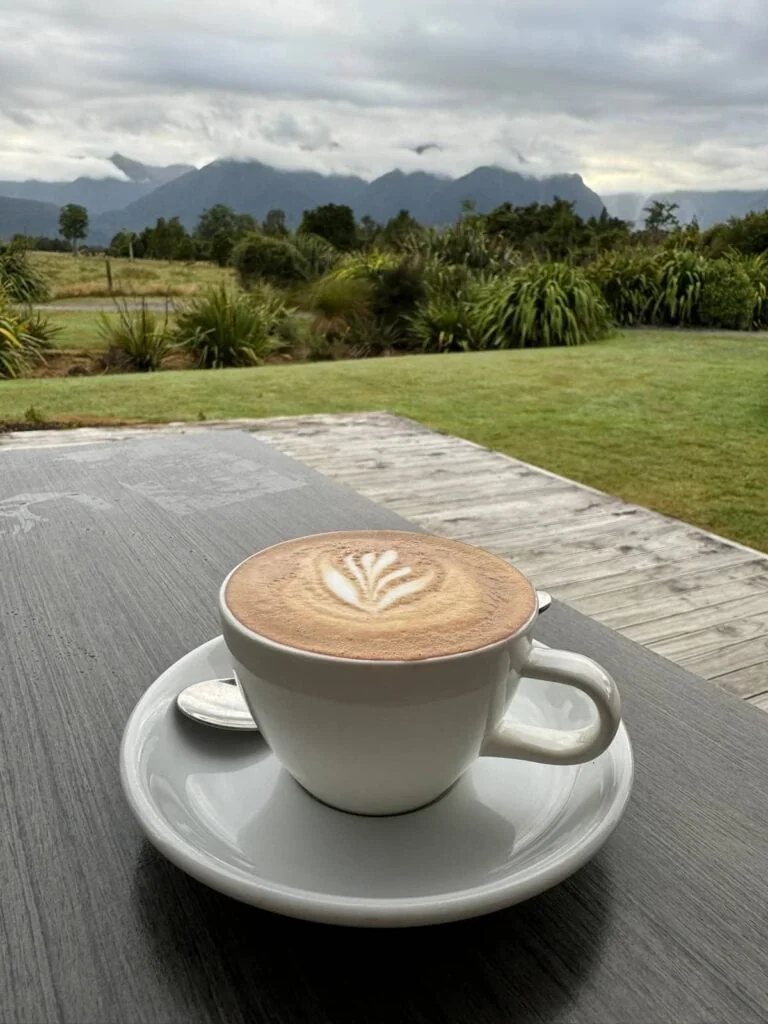
39. Try a Flat White
If you're a coffee drinker, then you'll really enjoy New Zealand. There's a strong coffee culture there with cute cafes all over the place.
You can get all kinds of espresso drinks, but you have to try a flat white while you're there. New Zealand claims to have invented the drink, but they're in a bit of a fight with Australia over that claim.
I'm not enough of a coffee aficionado to be able to fully describe how a flat white differs from other espresso drinks, but apparently a flat white is similar to a latte but with a little less foam.
I definitely enjoyed my fair share of flat whites while traveling all over New Zealand and am already missing them as I write this just a little over a week after leaving!
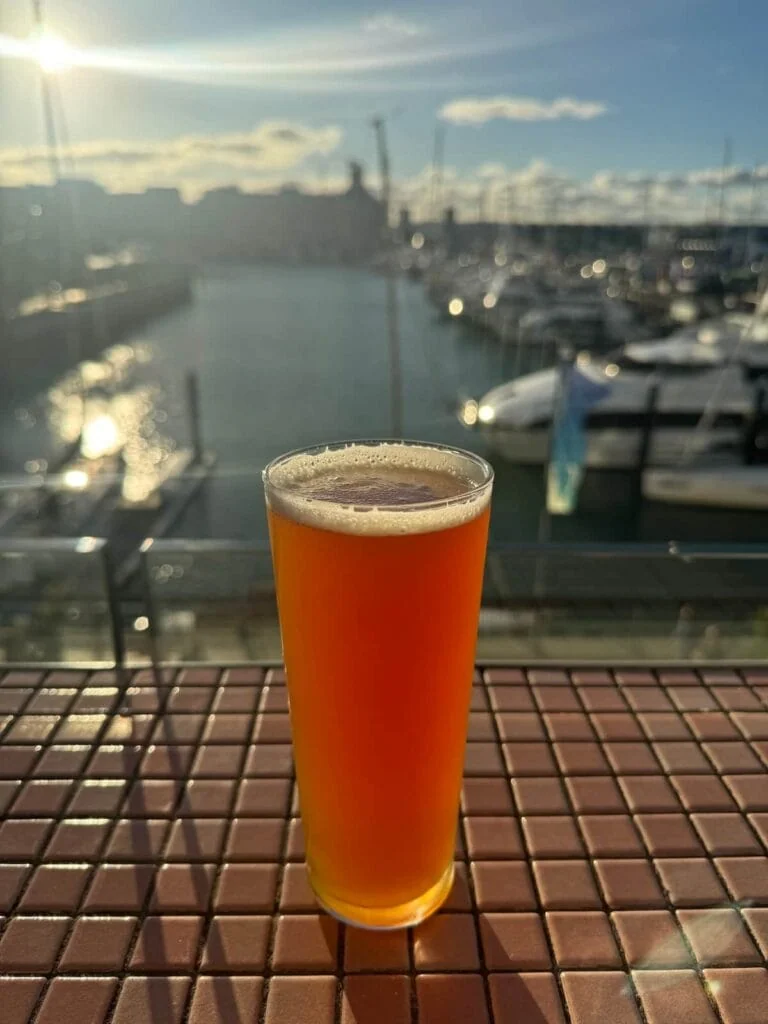
40. Carry Your Passport with You if You're Younger and Plan to Drink
New Zealand's drinking age is 18, but they're supposed to card anyone who looks 25 or younger. Theoretically, they aren't supposed to accept any foreign driver's licenses for alcohol sales, so if you plan to drink, it's a good idea to carry your passport with you.
I am almost 30 but people often think I'm in college… In the U.S. I'd say I get carded maybe 8 times out of 10. I always think of the U.S. as more intense about this though.
While in New Zealand, I think I was only carded twice. The first time was at a theater performance in Auckland when they were giving out free champagne. I didn't know about the passport thing and showed the man my driver's license, which he was fine with.
But then when I visited Hobbiton, they wouldn't take anything but a passport. I offered to show my driver's license and a picture of my passport, but they wouldn't take it.
Frequently Asked Questions
Here are some answers to questions that often pop up when folks ask for New Zealand travel tips, tricks, and advice.
How many days in New Zealand is enough?
I recommend spending a minimum of two weeks in New Zealand if you can. It can take a while to travel from place-to-place, and there are so many things to see and do!
My dad and I spent two weeks traveling around New Zealand and were able to see many of the highlights. I spent another two weeks solo, but I still feel like I want to go back again to see more.
What is the best month to travel to New Zealand?
If you're looking for a mix of outdoor activities that depend on good weather, I find the best month to travel to New Zealand is March. Weather tends to still be warm then as summer comes to a close, but there are fewer crowds. If you can't visit in March, consider visiting during any of the other summer months in December, January, or February.
I personally spent the month of March in New Zealand and felt like it was a great time to visit.
Does a U.S. citizen need a visa for New Zealand?
U.S. citizens planning to visit New Zealand for a short amount of time for tourism purposes do not need a visa. However, they do need to have a New Zealand Electronic Travel Authority (NZeTA) before visiting. You can apply for this online, and it's typically processed in 72 hours.
What items are not allowed into New Zealand?
New Zealand's Customs Service prohibits you bringing in objectionable material, equipment for smoking or taking drugs, and some firearms and weapons, among other things. In addition, some medicines are prohibited or restricted, and some items require a permit or an exemption.
Learn more from the Customs Service here.
Do I need cash in New Zealand?
You should take out a small amount of cash for traveling around New Zealand. Sometimes you may need to use cash for “honesty boxes” to pay for hiking trails like Roy's Peak or if you're buying fresh produce in the countryside. Otherwise, almost everyone takes credit cards.
Start Planning Your Trip and Don't Forget Travel Health Insurance
Now that you've learned all these New Zealand travel tips, it's time to get planning. Why don't you start by checking off one easy (but oh so important!) thing off your list: travel health insurance.
➡️ Book your travel health insurance here before you forget!



